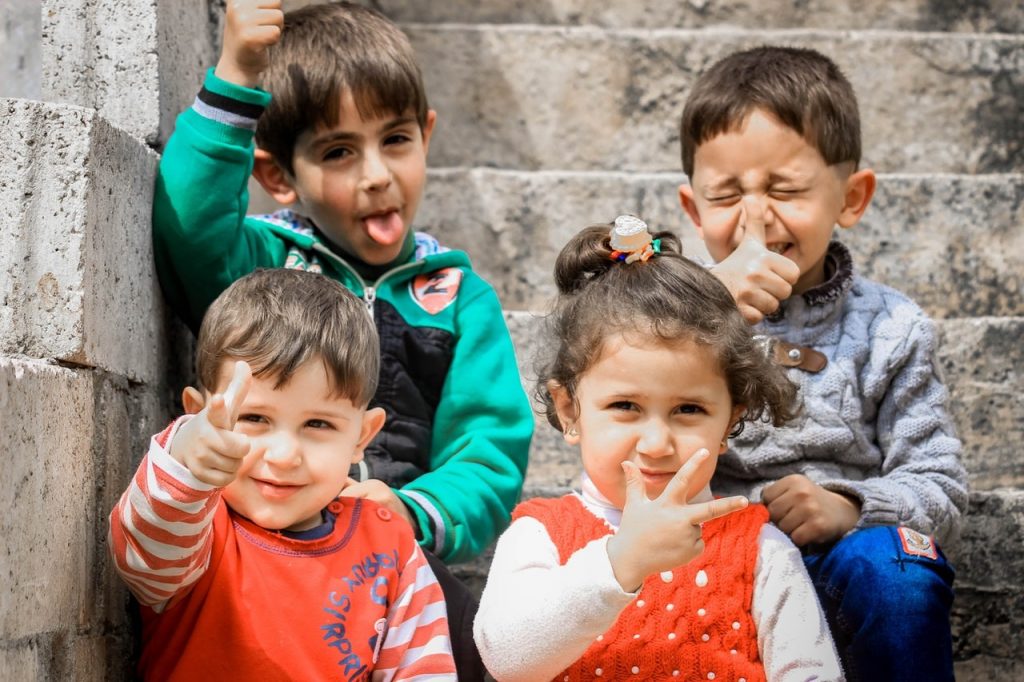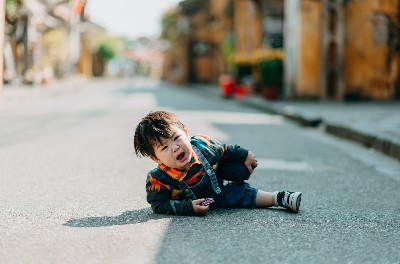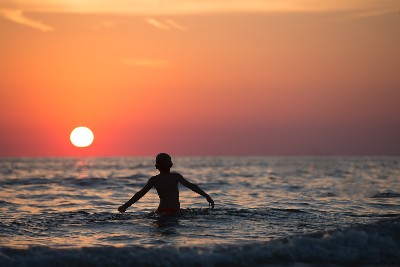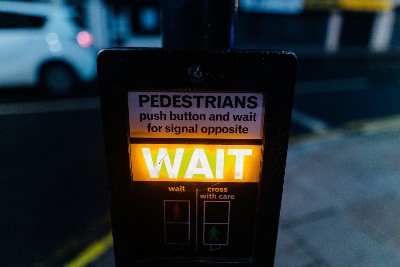How to keep children safe from accidents

Estimated reading time: 11 minutes
Introduction
From the 6th-12th June, it’s Child Safety Week. Nationwide, the Child Accident Prevention Trust (CAPT) encourages conversations about managing the risks to child safety. This year’s theme is Safety in mind; CAPT wants us all to think on the ways we can reduce the chances of accidents before they happen. To that end, we’ve written an article on how to keep children safe from daily accidents.
We’ll explore some of the common ways children can get hurt or unwell, inside and outside the household, determining why they happen and how we can reduce their likelihood. However, we’ll also touch on teaching children how to keep themselves safe; providing them with an educated independence is a vital skill to carry into later life.
Falls
It’s not exactly front-page news to say that children fall often. Whether a stumble whilst they’re taking their first steps on uneasy footing or a minor crash whilst learning how to ride a bike, the little ones seem to feel the pull of gravity more than the rest of us. There’s a certain necessity to this; after all, learning how to fall is key to learning how to pick yourself back up again.
That said, some falls are more damaging than others and children are more or less resilient at different ages. So, here’s a few scenarios to consider, and how to prepare for them:
Cots and changing tables
We’re all essentially immobilised for our first 9 or so months after the womb; no wonder children are often so eager to wriggle, crawl and eventually waddle about and explore! To stop any falls, change your baby on a floor unless you can go without leaving them totally unattended. Cots should have guard rails taller than your baby!
Stairs
Fit safety gates at the top and bottom of the staircase; until they’re completely sure on their feet, your children shouldn’t be ascending or descending staircases alone. It also might be a good idea to hold off on the floating stairs until they’re teenagers!
Trampolines
As children get older, it’s quite common for them to ask for a trampoline for Christmas or their birthday. Trampolines can be safe, provided you make sure your children follow some rules. Preferably, children should go one at a time on trampoline; if there are two children playing, they should be of similar weight. You should also get a trampoline with a surrounding safety net.
Bicycles
Falling off is part of learning how to ride a bike and shouldn’t be a deterrence. Children can normally take a fall or scrape to the knee in their stride. That said, it’s common sense to protect their heads. Make sure children wear properly-fitting helmets, of good quality, which aren’t too tight or too loose.
Burns
Burns are another common ailment for children; whilst the majority aren’t too severe, their softer skin and general lack of awareness can result in physical and mental burn scarring. In general, children shouldn’t be left around anything extremely hot. Here’s a few examples to consider:
Cooking
Inquisitive children can be particularly enamoured by the kitchen. Bubbling pans, roasting chickens and sizzling bacon are both a delight for the senses and a potential source of a burn. Try to keep children out of the kitchen when you’re cooking, or in a secure highchair if that’s not possible. Under no circumstances should you leave a child alone in the kitchen. Perhaps you’re not a parent but an early years practitioner. If the children you care for are engaging in a group baking session, ensure that they’re always monitored. Adults should be the only ones using ovens or heat sources, explaining to children what’s going on in the oven but ensuring they keep a respectful distance.
Open flames, fireplaces and heating
You should really be aware of direct sources of heat; as with cooking, they’re so attractive to the untrained senses of a young child. From a young age, you should teach children to respect fire. Put fireguards around a fireplace, if you’re lucky enough to have one, and explain to the child why it’s necessary. If you’re lighting a fire, inside or outside, keep children at a safe distance and only allow adults to use firelighters, matches or any source of heat.
Central heating can burn children easily; their soft skin and lack of awareness can make a radiator into a problem. Keep radiators away from cots when your child is young and explain to them why they shouldn’t touch one as soon as they can understand.
Electronics

From curlers and hairdryers to kettles and soldering irons, there’s a wide array of household appliances which can burn us. We take our experience for granted, knowing what parts not to touch, whether to use heat mats and other little titbits which serve us well. Children don’t know this, however. Whether you’re a parent leaving hair straighteners on your bed in the morning or nursery staff letting hot glue guns cool, you have to be aware of curiosity when assessing how to keep children safe.
Electronic appliances which produce heat, whether intentionally or as a by-product, should be turned off when not in use or left to cool in a safe, inaccessible space. Remember, educate your child as soon as possible on the ways to handle or not handle these items.
Choking and suffocation hazards
Choking
Due to underdeveloped windpipes, a lack of muscle memory and a natural inclination to put things in their mouths, babies and young children are in danger of suffocating and/or choking. They don’t quite know yet how to chew and what is or isn’t food.
To help, chop their foods into small, manageable pieces and avoid problematic foods like popcorn and hard-boiled sweets. Read toy wrappers to understand what might constitute a choking hazard and abide by the age recommendations. If you have older children, teach them not to leave small, intricate parts from toys within reach of their siblings.
If you work in a nursery with different age groups, you should ideally have different rooms for each group. Lego, sand pits and other toys with small pieces should be entirely isolated from the eager hands of small babies and toddlers who don’t know better.
Suffocation
There’s a trend emerging here; children are often in danger due to both their physical vulnerability and lack of knowledge and experience. Suffocation is no outlier here. Plastic bags, a relatively harmless daily item for adults, can be extremely dangerous for children. Similarly, a cot full of duvets and pillows is an unsafe cot. Little ones can wriggle themselves into bad situations and struggle to get out of them.
Avoiding suffocation isn’t something you necessarily teach; over time, children learn what constitutes food and what doesn’t. A little reminder every now and then doesn’t hurt, though.
Water
Inside and outside the home, water can be a hazard for young children, owing again to a lack of experience and an inability to swim well or breathe properly underwater.
Baths
That said, a child doesn’t need to be in a deep pool to struggle in water. Never leave your child alone in the bath. They don’t need much water depth to encounter trouble; a child who doesn’t have full mobility could stumble and struggle to breathe in even a few inches of water. Have all towels, toys, bath seats and any other bath-paraphernalia ready in advance and always stay with the child.
At the beach, rivers, lakes and/or swimming pools
When your child has learned to swim and they’re ready for the swimming pool or the beach, teach them how to stay safe in each environment.
Lakes and swimming pools may seem less dangerous since there’s no tide or pulling waves. If they tire, however, a gentle swim in a deep lake could become dangerous. However, you should always explain to your child that they should stay near the shoreline, in sight of an adult and/or a lifeguard. Until they’re older and stronger, swim with your child, and ensure they wear armbands.
Rivers often have strong currents, about which you should teach your child. Help them understand how to estimate a current, where their entry and exit points are in a river and, until they know how to respect a river, always stay with them.
The ocean is the body of water that they most need to respect, however. Teach children the rules of the beach, including swimming in the lifeguard zone and understanding what a windsock might teach them. Again, always swim with them until they’re older and have a sophisticated understanding of and respect for the sea.
Chemicals
All parents simultaneously admire and fear their child’s curiosity. Common inciters of this curiosity, perhaps due to their bright colours, are household chemicals. Washing-up liquid, bleach, and detergent are common culprits.
Within reach, they present a danger to children’s hands, skin, eyes and, most concerningly, insides. There are some easy rules to follow, however, which keep your children safe from them:
- Keep all dangerous cleaning chemicals in a lockable cupboard, or out of reach.
- Keep an eye on products as you use them and put them away immediately after use.
- Keep medicines, in liquid or pill form, in a similarly inaccessible area; don’t leave them in an everyday bag.
- Don’t be fooled; children are smart and will eventually crack a safety cap!
Again, once they can understand, it’s vital to teach children to look out for and understand hazardous/irritant chemical signs on products.
Road safety
Children should never fear going out into the big bad world; they should enjoy the outdoors, particularly given the current inward inclinations of society. That said, they should be aware of proper road safety wherever they are.
Before a certain age, children should never be left alone, inside or outside the house. When it gets to the point that they can walk home unsupervised, however, it’s key to have taught them good road safety from a young age. Here’s a few things to keep in mind:
- Be a good example; children copy their parents. This is generally good parenting practice, particularly regarding road safety. Cross the road when the green man shows and explain to your child why you do so. Point out when someone crosses on the red light and why this is wrong.
- If they’re going to start walking home from school, practice the route with them. Make sure they feel comfortable and know to be attentive to their surroundings.
- If they’re cycling on the road, or anywhere else for that matter, ensure they wear a helmet.
- Children are often, of course, passengers in the car, where they’re not necessarily safe. Abide by the rules regarding booster seats, whether your baby is a new-born or a 5-year old.
General fire safety
Burns aren’t the only potential hazard from heat sources like fires and ovens. There is, tragically, always the chance of a fire starting inside or outside the home. How can you help to prevent this?
Well, if your child is cooking, always monitor them. Keep fire-starters like matches and lighters well out of reach. Encourage them to practice good electrical etiquette; they should never overload plug sockets, for example. You could even teach your child about the fire triangle as they get older, so they can evaluate independently what might start a fire.
However, it’s important to note that you are as likely to accidentally start a fire as your child, if not more so! More important, then, is that you teach your child what to do in the event of a fire:
- Teach children about fire alarms; what they mean and why you should never turn them off.
- As a family, know your exit routes and strategy in case of a fire; practice them with some regularity.
- Make them aware that they should never try to fight a fire; their first instinct should be instead to escape.
How to keep children safe in education or early years settings
Protecting children from accidents is just one element of the safeguarding duty held by many education and/or early years staff. If you work with children and would like to know more about the wider safeguarding arena, explore some of our other safeguarding training courses, suitable for a range of occupations:
- Safeguarding in Childcare and Early Years
- Safeguarding in Primary Education
- Safeguarding in Secondary Education
Perhaps you feed children on a daily basis, perhaps as part of a wider nursery or playgroup team? For more information on proper food hygiene practice, take a look at our food hygiene courses:
Conclusion
Until children get older and wiser, we have a responsibility to protect them in situations in which they are vulnerable or lack experience. Moreover, we must teach them how to avoid these situations, so that they can carry that knowledge into adulthood and learn good habits.



